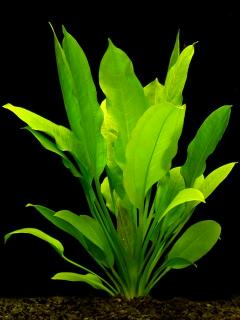 |
| Photo by Tambako the Jaguar |
A juvenile gecko is quite active, but as they mature they become rather quiet and tame, and can be held and will take food from your fingers. The adult gecko does not get larger than nine or ten inches and can be handled by older children. Even younger children can hold them, but make sure they are supervised to handle the gecko gently and to avoid picking them up by the tail or holding the tail tightly. As with other lizards in the reptile family, their tails can break off. Actually, this might be an interesting occurrence for children, as the tail will be regrown, though it never looks exactly the same as the original tail
Leopard geckos are easily kept in an aquarium or other plastic cages, as long as each gecko has at least ten inches square of floor space. The cage should be a minimum of twelve inches high. Have a shallow bowl of water that doesn't spill as the lizards crawl into or over it. The food bowl for the gecko can be something about the size and shape of the lid for a gallon jar, a larger flat area. You will be using crickets or other insects as food, and it is better if the food remains in the food bowl. The bottom of the cage should have some kind of paper toweling so that it can be changed in order to keep the cage clean.
One really important point about raising reptiles is to keep the area sufficiently warm. Geckos thrive best when the daytime temperature is in the eighties, up to eighty-eight degrees. Nighttime temperatures can get to the middle sixties without causing any health problems. If your house is normally cooler than that, a lamp with a forty-watt bulb over the top of the cage should create enough heat to keep the gecko warm. There are also hot rocks that you can buy and put in the cage. Keep the cage out of direct sunlight (because it will get too warm) and have a screen cover for the top if you have small children or cats in your household.
is to keep the area sufficiently warm. Geckos thrive best when the daytime temperature is in the eighties, up to eighty-eight degrees. Nighttime temperatures can get to the middle sixties without causing any health problems. If your house is normally cooler than that, a lamp with a forty-watt bulb over the top of the cage should create enough heat to keep the gecko warm. There are also hot rocks that you can buy and put in the cage. Keep the cage out of direct sunlight (because it will get too warm) and have a screen cover for the top if you have small children or cats in your household.
Once you have the environment, go to a reputable pet store and select your geckos. Leopard geckos come in a variety of colors, and you can keep several in the same cage as long as there is only one male in the group (most geckos that are sold are female). They eat mealworms and crickets, and correct care and feeding should be discussed at length with the seller. A well taken care of gecko can live as long as twenty years.
Raising a reptile can be a fascinating hobby whether you are eight or fifty-eight years old. Leopard geckos are among the easiest to raise, are easily tamed, and are always beautiful and interesting pets. Consider a gecko for your next pet.






